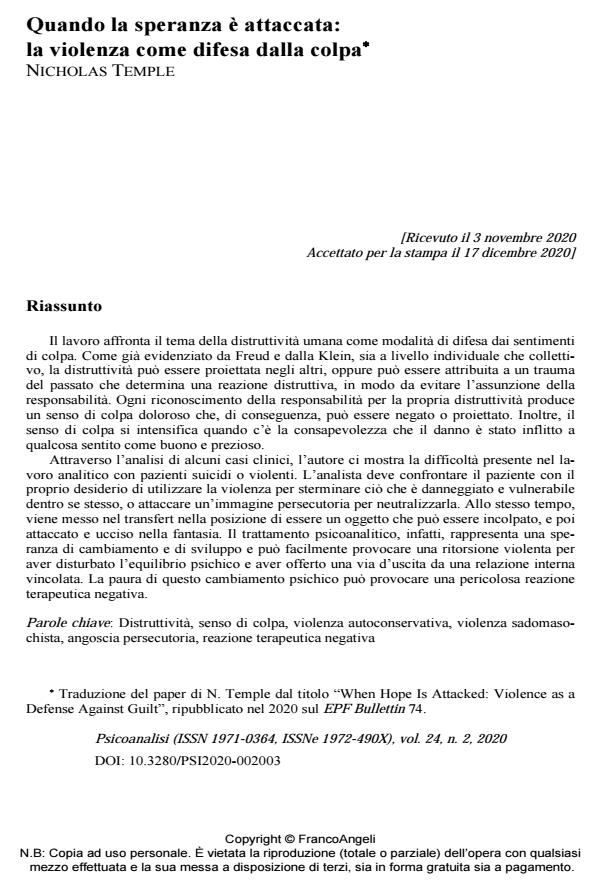When Hope Is Attacked: Violence as a Defense against Guilt
Journal title PSICOANALISI
Author/s Nicholas Temple
Publishing Year 2021 Issue 2020/2
Language Italian Pages 15 P. 41-55 File size 211 KB
DOI 10.3280/PSI2020-002003
DOI is like a bar code for intellectual property: to have more infomation
click here
Below, you can see the article first page
If you want to buy this article in PDF format, you can do it, following the instructions to buy download credits

FrancoAngeli is member of Publishers International Linking Association, Inc (PILA), a not-for-profit association which run the CrossRef service enabling links to and from online scholarly content.
This paper deals with the issue of human destructiveness as a defense against feelings of guilt. As Freud and Klein had already pointed out, both on an individual and collective level, destructiveness can be projected onto others, or it can be attributed to a past trauma that causes a destructive reaction, in order to avoid taking responsibility. Any acknowledgement of responsibility for one’s own destructiveness produces a painful sense of guilt which, as a consequence, may be denied or projected. Moreover, guilt is intensified when there is an awareness that damage has been inflicted on something felt as good and valuable. Through the analysis of some clinical cases, the author shows us the difficulty in the analytical work with suicidal or violent patients. The analyst has to confront the patient with his own desire to use violence to exterminate what is damaged and vulnerable within himself, or to attack a persecutory image in order to neutralize it. At the same time, he is put into the transference in the position of being an object that can be blamed, and then attacked and killed in fantasy. Psychoanalytic treatment, in fact, represents a hope for change and development and can easily provoke violent retaliation for disturbing the psychic equilibrium and offering a way out of a constrained internal relationship. The fear of this psychic change can provoke a dangerous negative therapeutic reaction.
Keywords: Destructiveness, sense of guilt, self-preserving violence, sadomasochistic violence, persecutory anxiety, negative therapeutic reaction
Nicholas Temple, Quando la speranza è attaccata: la violenza come difesa dalla colpa in "PSICOANALISI" 2/2020, pp 41-55, DOI: 10.3280/PSI2020-002003